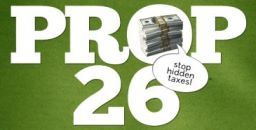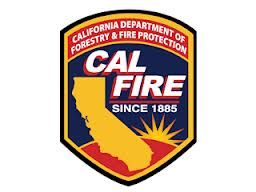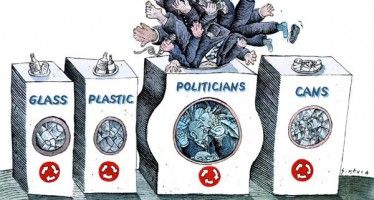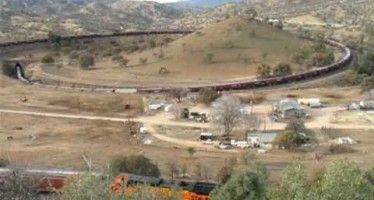Lawsuit, bills seek to dowse fire tax
By Dave Roberts
It hasn’t been a great year for the California Department of Forestry and Fire Protection. In January, the Los Angeles Times revealed that for seven years Cal Fire has been hoarding a slush fund that grew to $3.66 million. In February, the Sacramento Bee reported that Cal Fire fees that were supposed to be used for fire prevention measures had instead been used to investigate wildfires, according to the legislative counsel.
And earlier this month, the Howard Jarvis Taxpayers Association served Cal Fire and the state Board of Equalization with a lawsuit seeking to nullify Cal Fire’s $150 annual fee (or tax) on homeowners in mostly rural California for fire prevention. In addition, three bills have been introduced by Republicans in the Legislature seeking to do likewise.
The slush fund was a major black eye for Cal Fire. Instead of following the law by depositing money from legal settlements into the state General Fund, fire officials put it into the care of the California District Attorneys Association. In addition to paying CDAA a fee to hold the money, fire officials spent it on digital cameras, evidence sheds, GPS equipment, metal detectors and a conference at a Pismo Beach resort, among other expenditures.
Cal Fire faces bipartisan fire over slush fund
Coming on the heels of the revelation of the state Department of Parks and Recreation’s secret $54 million slush fund, Cal Fire was pilloried on editorial pages up and down the state:
— “Once again, California residents have been asked to pay higher taxes to help revenue-challenged state agencies fund important services — only to learn that those agencies had hidden large sums of money in secret accounts to keep it away from public scrutiny,” editorialized the Orange County Register.
— “Its arrogance underscores the larger issue: The money doesn’t belong to some bureaucrat with a badge. It belongs to the people,” lectured the Sacramento Bee.
 Gov. Jerry Brown was quoted in the Bee calling the slush fund “a relatively boring story, to tell you the truth.” But the governor added that he would look into it. Senate Republican Leader Bob Huff, R-Diamond Bar, responded that “’boring’ is the last word I would use to describe these very disturbing revelations of hidden funds.”
Gov. Jerry Brown was quoted in the Bee calling the slush fund “a relatively boring story, to tell you the truth.” But the governor added that he would look into it. Senate Republican Leader Bob Huff, R-Diamond Bar, responded that “’boring’ is the last word I would use to describe these very disturbing revelations of hidden funds.”
Cal Fire spokesman Dennis Mathisen said in an interview that there was no effort to conceal the fund.
“The reality is that the fund had been publicly known,” he said. “We initiated our own audit of the fund a few years ago. The audit tried to determine the appropriate way of administering the fund. We are going through the process of re-evaluating it and determining the correct method of administering the fund.”
Scathing audit was three years old
Apparently that re-evaluation process has been going on for more than three years. The 26-page audit report, which was issued in November 2009, contains numerous criticisms of the way Cal Fire was handling the money:
— The funds collected from legal settlements were not reported to the Cal Fire Departmental Accounting Office or the Law Enforcement Program, and did not become part of the state’s accounting system.
— The money was dubbed a “Fire Investigation Trust Fund” — but was never placed in a trust account — in order to ensure it wouldn’t go into the state’s General Fund. “It is not clear what authority Cal Fire has to separate the Fund money from State money,” the audit states.
— There was no documentation of how the fund committee made its decisions on spending the money.
— State purchasing guidelines were not followed for hundreds of thousands of dollars spent on equipment.
— Travel expenses for training conferences were improperly documented, including numerous overcharges for lodging and unapproved travel to conferences in other states.
Slush fund depicted in benign light
Mathisen defended the expenditures, saying, “The sole purpose of that fund is to help support fire investigation-related things such as equipment and training. That involves Cal Fire investigators, local agency investigators, district attorneys.” The Pismo Beach conference focused on fire investigation training, he said, adding that “the hotel charged the typical government rate, which is lower than the standard rate.”
Mathisen also disputed the Bee’s report that fire prevention fees were not supposed to be spent on wildfire investigations.
“One of the fire prevention activities that’s mentioned in the law, it’s very clear that it includes the activities involved in fire investigations,” he said. “We look at the act of investigating fires and determining the cause, whether negligence or a crime such as arson. [If arson is suspected] we go through case development and district attorneys to prosecute. In the case of accidents, [investigation] helps us educate the public on how to prevent those things from happening in the future.”
The enabling legislation for the fire prevention fee, ABX1 29, does not specifically cite wildfire investigation as one of the uses for the funds. Money can be spent on public education, fire prevention projects and activities as well as fire severity and hazard mapping.
But there is no definition for what constitutes a “fire prevention project.” The legislation leaves it up to the Cal Fire board to determine that. In essence, the fire prevention fee, which was projected to total as much as $89 million annually, is potentially another slush fund for Cal Fire officials to use as they see fit as long as they can call it a fire prevention project or activity.
The goals of the Howard Jarvis lawsuit
 And that’s what concerns the HJTA, which filed its class-action suit in Superior Court in Sacramento in October.
And that’s what concerns the HJTA, which filed its class-action suit in Superior Court in Sacramento in October.
“This tax was dreamed up by politicians in Sacramento who are so desperate for revenue that they were willing to ram this through the Legislature without the proper two-thirds vote,” said HJTA President Jon Coupal in a press release. “The fire tax is a direct violation of Prop. 13. It is our goal to overturn this tax, prevent the politicians from taking more money from hardworking people for a program they were already paying for, and help taxpayers to get a refund from the government.”
The suit argues that the fire prevention assessment does not fall under the state constitutional definition of a “fee.” Therefore, it’s a tax requiring two-thirds approval in the Legislature, which it did not receive due to strong Republican opposition.
Article 13 A, section 3, subdivision (b) of the California Constitution defines a tax as “any levy, charge, or exaction of any kind imposed by the state” unless it’s imposed for a specific benefit, privilege, service or product provided directly to the payer that is not provided to those not charged, and which does not exceed the reasonable costs to the state of providing the benefit, privilege, service or product.
It’s likely that state attorneys will argue that fire prevention fits the definition of a fee instead of a tax, because it’s: 1) a specific service provided directly to people living in the mostly rural 31 million acres of California that are in Cal Fire’s State Responsibility Area, 2) that it is not provided to people outside of that area who are not charged a fee, and 3) it does not exceed the cost of providing that service.
A version of that argument was made by the author of ABX1 29, Assemblyman Bob Blumenfield, D-Los Angeles, on the Assembly floor just before the bill was approved on June 15, 2011.
“This approach has long been supported by the LAO [Legislative Analyst’s Office],” he said. “It reduces the financial exposure of the state to fight fires in the State Responsibility Areas, especially at a time when local governments continue to approve developments that increase fire risk. … We worked very closely when the Senate sent this over with leg[islative] counsel. And the key distinction here [making this a fee instead of a tax] is that it deals with prevention rather than protection. And so it’s not replacing existing services. But there’s a direct nexus. And that’s why this is an acceptable bill.”
Prediction of fire tax’s demise
Blumenfield was responding to then-Assemblyman Kevin Jeffries, R-Lake Elsinore, who predicted the fire assessment would soon be doused.
 “We’ve seen this bill before,” he said. “At least I have over previous terms here. A funny thing happened: it failed in previous versions. When it was a $50 tax — you can call it a fee — but when it was a $50 tax it required a two-thirds vote. Now that it has moved to a $150 tax, somehow it’s been changed to a majority vote. I’m wondering if the leg[islative] counsel has issued a new opinion reversing their previous opinions that said this was a tax. It clearly violates Proposition 26 [requiring two-thirds support for tax hikes], and will last maybe a week at best until any number of interest groups, property rights proponents, any group out there who just happens to have a spare moment, and this bill will be dead. This tax will die a fast, quick death.”
“We’ve seen this bill before,” he said. “At least I have over previous terms here. A funny thing happened: it failed in previous versions. When it was a $50 tax — you can call it a fee — but when it was a $50 tax it required a two-thirds vote. Now that it has moved to a $150 tax, somehow it’s been changed to a majority vote. I’m wondering if the leg[islative] counsel has issued a new opinion reversing their previous opinions that said this was a tax. It clearly violates Proposition 26 [requiring two-thirds support for tax hikes], and will last maybe a week at best until any number of interest groups, property rights proponents, any group out there who just happens to have a spare moment, and this bill will be dead. This tax will die a fast, quick death.”
Despite Jeffries’ assurance, the assessment is very much alive and well nearly two years later. The first billing for about 750,000 habitable structures was sent out from August through mid-December last year (in alphabetical order by county). A little over $73 million has been collected so far.
That’s short of the estimated revenue because 20 percent of respondents have declined to mail back their payments. More than 87,000 have filed an appeal. About 71 percent of the appeals, which were based on the fee being an illegally passed tax, were denied, according to Mathisen. More than 12,000 appeals were granted, however, as those assessments were based on misinformation from incorrect records.
“When this law was created there was no database in existence that identified all habitable structures in the SRA,” said Mathisen. “That was a significant task to put together that database. So we knew that there were going to be some inaccuracies. We are making those corrections as we move along.”
Fighting fire tax: The big picture and at individual level
The second round of billing for the current fiscal year was due to start in April. But it will be delayed, according to the Associated Press, to allow more time to sort through the thousands of complaints stemming from the initial billing.
In the meantime, three bills seeking to kill the fire prevention assessment are due to be heard in committees this legislative session: AB 23, AB 124 and SB 17. Click here for more information on the assessment from Cal Fire’s perspective. For the HJTA’s take, including instructions on filing an appeal, click here.
Related Articles
Gov. Brown bans plastic bags
Because Gov. Jerry Brown just signed SB270, in July 2016 plastic bags will be banned in stores in California. Paper
Rail Series: Surmounting the Tehachapi Barrier
This is Part 5 of a series on Medium-Speed rail alternatives to California’s High-Speed Rail project. Click to read Part 1, Part 2, Part 3, Part
CA Businesses Split for Utah
JULY 13, 2011 What do California-based companies Adobe Systems, eBay, Electronic Arts, Oracle and Twitter have in common? All have





